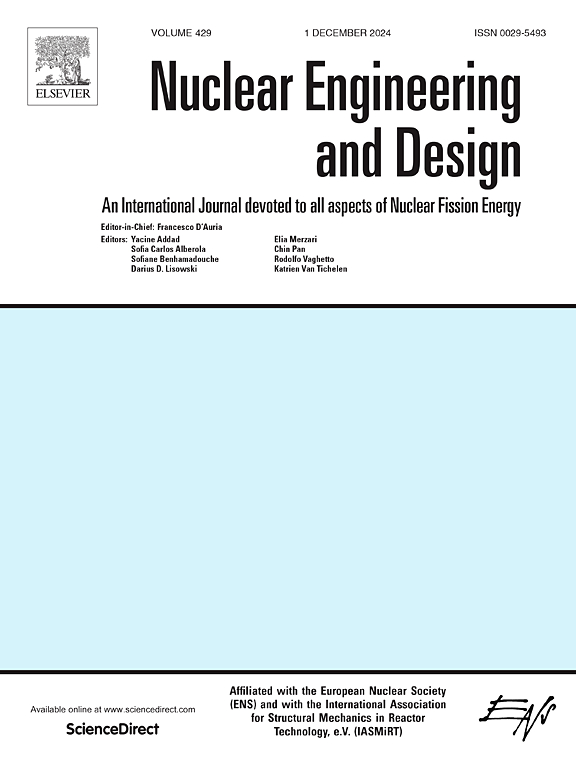Rhenium volatilization in SiO2-KNO3-KReO4 mixtures at elevated temperatures
IF 1.9
3区 工程技术
Q1 NUCLEAR SCIENCE & TECHNOLOGY
引用次数: 0
Abstract
Due to its long half-life, high fission yield, and high mobility in the groundwater, Technetium-99 (Tc-99) is a troublesome nuclide in nuclear waste. Moreover, the primary concern is the high volatility of Tc during nuclear waste vitrification. Previous studies demonstrated that nitrate significantly affected the Tc volatilization during the vitrification of Tc-containing waste. However, identifying how nitrate affects Tc volatilization is challenging due to the complexity of the composition of nuclear waste. This study used a simplified SiO2-KNO3-KReO4 feed with rhenium (Re) as a Tc non-radioactive surrogate to study the nitrate effect on the Re volatilization at elevated temperatures. The results showed that KNO3 could facilitate Re volatilization at temperatures below 800 °C when the molar percentage of KNO3 in the KNO3-KReO4 binary system exceeded 60 mol%, which was attributed to the eutectic reaction between KReO4 and KNO3 at 310 °C. However, the increased KNO3 content could inhibit the Re volatilization at temperature above 1200 °C since adding KNO3 could increase the amorphous phase content, where Re was encapsulated and hardly evaporated.
求助全文
约1分钟内获得全文
求助全文
来源期刊

Nuclear Engineering and Design
工程技术-核科学技术
CiteScore
3.40
自引率
11.80%
发文量
377
审稿时长
5 months
期刊介绍:
Nuclear Engineering and Design covers the wide range of disciplines involved in the engineering, design, safety and construction of nuclear fission reactors. The Editors welcome papers both on applied and innovative aspects and developments in nuclear science and technology.
Fundamentals of Reactor Design include:
• Thermal-Hydraulics and Core Physics
• Safety Analysis, Risk Assessment (PSA)
• Structural and Mechanical Engineering
• Materials Science
• Fuel Behavior and Design
• Structural Plant Design
• Engineering of Reactor Components
• Experiments
Aspects beyond fundamentals of Reactor Design covered:
• Accident Mitigation Measures
• Reactor Control Systems
• Licensing Issues
• Safeguard Engineering
• Economy of Plants
• Reprocessing / Waste Disposal
• Applications of Nuclear Energy
• Maintenance
• Decommissioning
Papers on new reactor ideas and developments (Generation IV reactors) such as inherently safe modular HTRs, High Performance LWRs/HWRs and LMFBs/GFR will be considered; Actinide Burners, Accelerator Driven Systems, Energy Amplifiers and other special designs of power and research reactors and their applications are also encouraged.
 求助内容:
求助内容: 应助结果提醒方式:
应助结果提醒方式:


